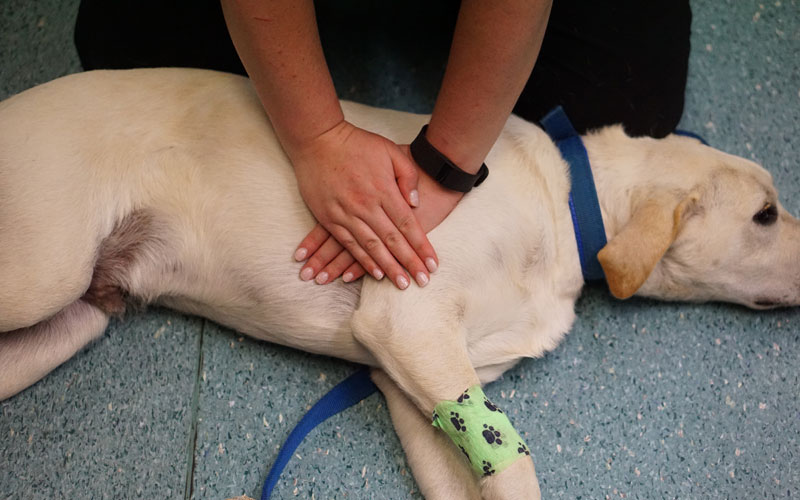It’s something we hope we never have to do, but performing CPCR on a pet may be the difference between your beloved animal’s life and death. Dr Joanna Paul shows us how.
You hear a choking sound and turn to see your dog pawing at his mouth, unable to breathe. Or maybe someone leaves the front door open a fraction too long and your indoor cat streaks past and straight out onto the road into oncoming traffic …
Accidents can happen despite our best intentions. Seeking immediate veterinary attention is, of course, the best course of action, but it can
take time to get there. Sometimes knowing what to do on the scene, during that critical window between something going catastrophically wrong and the moment you get to the vet clinic, can literally be the difference between life and death.
Cardiopulmonary cerebral resuscitation (CPCR, formerly known as CPR) is the treatment required to save an animal (or human) life when he or she is not breathing and the heart stops beating. Just like people, our pets need oxygen delivered to the cells of the body in order to survive. Breathing brings oxygen into the lungs, and a beating heart pumps oxygen-rich blood throughout the body. The purpose of CPCR is to provide enough blood fl ow and oxygen to the brain and vital organs to support life until more advanced medical therapy is available.
IN AN EMERGENCY, FOLLOW DR ABC:
DANGER
Assess the situation for danger to yourself fi rst. If the animal is on the road or there are any hazards in the environment, move to a safer location to perform CPCR. Remember also that an animal in pain is likely to bite, no matter how friendly or gentle they normally are.
RESPONSE
Speak to the animal and touch it gently. If it responds there is no need for CPCR, and attempting it could result in serious injury.
AIRWAY
The airway is basically the tubes connecting the mouth and nose to the lungs. If it is blocked, air will not be able to reach the lungs. You will need to check the airway and clear it if necessary. Extend the head and neck and pull the tongue forward. Be very gentle and take care not to overextend the neck if there is a possibility of spinal injuries.
Pull the tongue out and look inside the mouth. If you can see anything in there such as excessive saliva or vomit, remove it. If it’s too dark and you can’t see inside, carefully sweep your finger deep into the mouth and throat to remove any foreign material blocking the airway. Never put your finger inside the mouth of a conscious animal or you will be bitten.
BREATHING
Check for breathing, because sometimes a change of position or clearing the airway will allow breathing to resume spontaneously


Leave a Reply